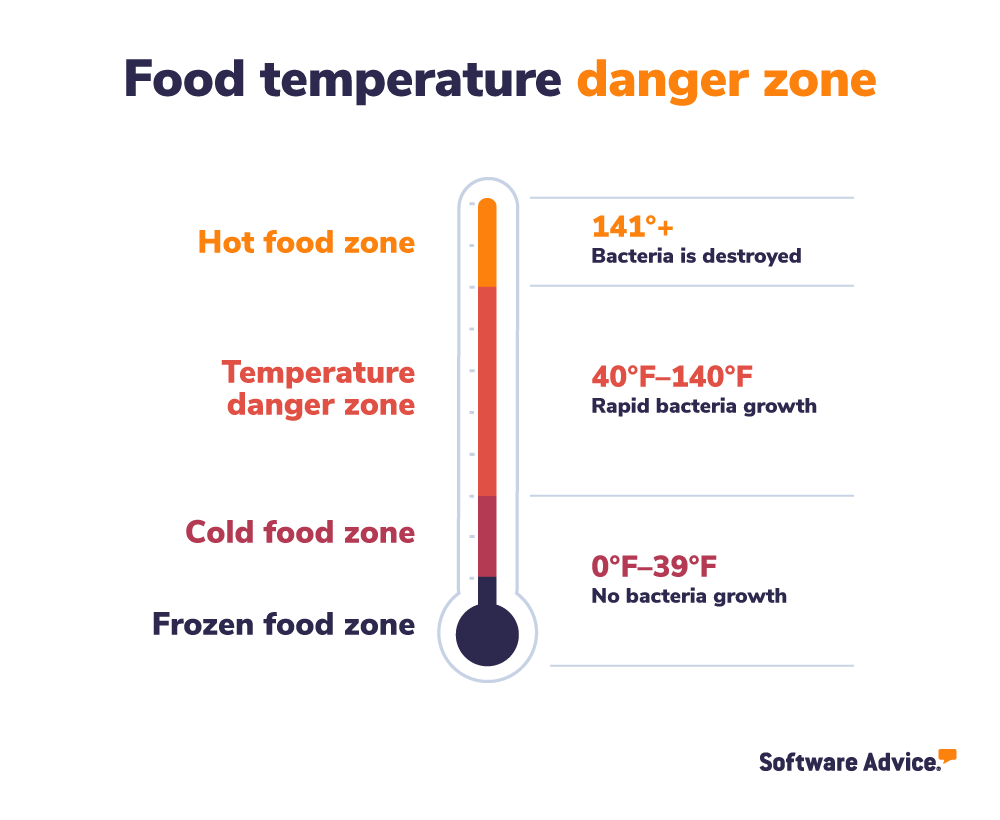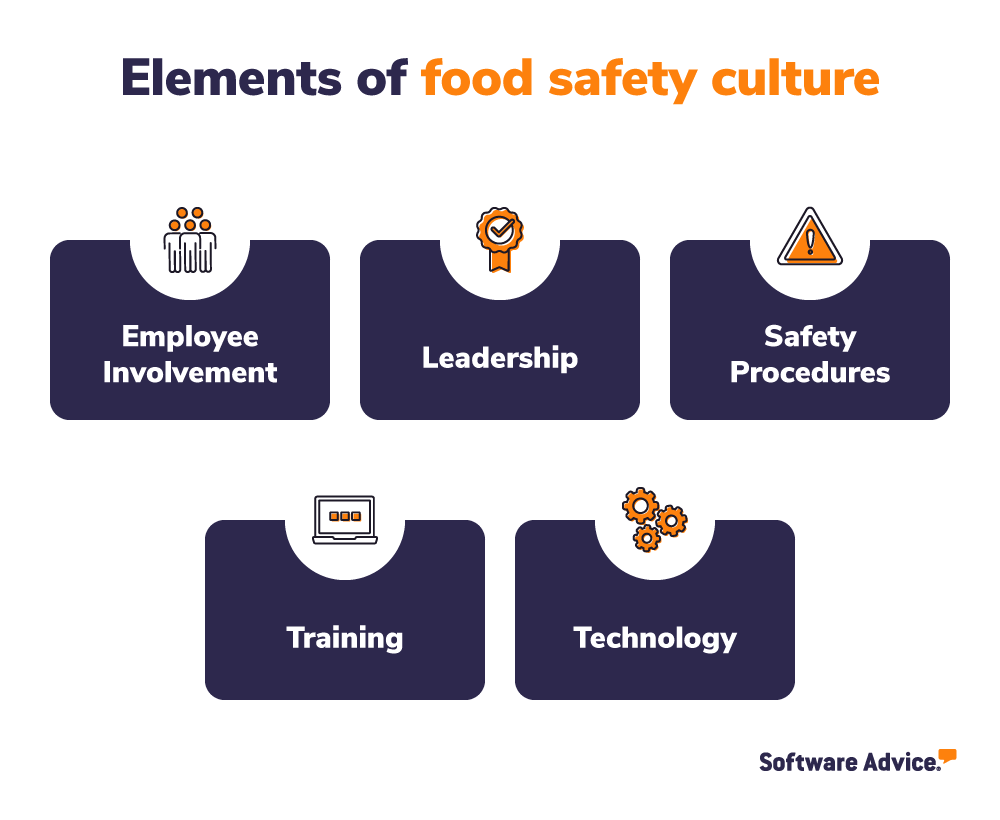How Technology Can Establish a Food Safety Culture at Your Restaurant
If you manage a restaurant or work in the food industry in 2020 and beyond, you’re responsible for keeping your customers safe from everything from COVID-19 to food poisoning that affects about 48 million Americans every year.
September is National Food Safety Education Month, which is a great time to make sure that your restaurant is as safe as it can be.
While the Centers for Disease Control advises that there is very low risk of contracting or spreading COVID-19 from eating or handling food, your food safety protocol and COVID-19 protocol should still go hand-in-hand under the umbrella of overall health and safety best practices in your restaurant. Technology can help on both fronts.
COVID-19 and food safety
COVID-19 safety protocol and food safety protocol are two very different undertakings. But they do have similarities.
Employee training. Just as your staff needs to be trained to prepare and handle food safely, they also need to be trained to clean, protect, and social distance safely to prevent the spread of COVID-19. Learning management software can make it easier to ensure compliance in both areas.
Frequent cleaning. Research shows that frequent cleaning of surfaces and hands is one of the most important precautions for preventing both foodborne illnesses and the spread of COVID-19. The inventory management feature of your restaurant management software can help you make sure that you never run out of cleaning supplies.
Customer perception. This summer, we surveyed more than 550 consumers and found that 72% were either not at all comfortable (38%) or minimally comfortable (34%) with resuming activities that involved groups of people in public places (i.e., eating at your restaurant). Your customers don’t necessarily know that COVID-19 safety and food safety aren’t directly related, and seeing an employee leave the bathroom without washing their hands OR serve food without a mask could be enough to cause them to leave and never return.
The importance of food safety compliance
In 2015, Chipotle’s food production was hit by an E. coli outbreak, and then salmonella and norovirus, all within the course of a year. Hundreds of customers saw themselves become sick from a foodborne illness. By the end of 2016, Chipotle’s total sales had fallen from $4.5 billion to under $4 billion.
While a giant chain may be able to withstand the reputational and financial impact of a food safety and sanitation crisis, smaller restaurants are not as fortunate. A mistake can lead to illness from a pathogen or bacterium, a complaint, a damaged reputation, and ultimately a health inspection which could see your restaurant closing its doors for good.
In the wake of COVID-19, there is an increased focus on health and safety, both with the food you serve and the conditions you maintain for your customers and staff.
For example, Google “Harper’s Restaurant & Brew Pub” and just imagine what being responsible for the spread of 188 COVID-19 cases would do to your restaurant’s reputation.
Whether you’re just opening your restaurant or have already been operating one for years, maintaining food safety and COVID-19 safety standards is critical to your survival.
Without meeting inspections or adhering to local health codes, you will not even have the opportunity to open your doors to diners.
This is where technology comes in. Some restaurant software companies are recognizing that by introducing food safety features to their platforms while others are just straight-up offering services focused on food safety.
Monitoring food safety procedures calls for methodical systems and processes to be put in place. Here are a few ways technology can help with automation to ensure the safety and sanitation of your food and restaurant.
1. Monitor food temperatures
Why it’s important: As a restaurant operator, the last thing you’d want to deal with is a foodborne illness complaint. That’s why it’s paramount to ensure that food is chilled or heated to safe food temperatures.

The food temperature danger zone is between 41 and 135 degrees Fahrenheit, with the most bacteria growth between 70 and 125 degrees Fahrenheit. The longer a food item stays within that range, the more likely that harmful bacteria will spread.
How technology can help: Most food safety technology companies offer temperature monitoring in some way. Instead of manually checking your food temperature, you can ensure a food product is kept at a proper temperature with a refrigeration monitoring system that can tell you whenever temperatures fall or rise outside of ideal temperatures.
Additionally, there are other types of sensor technology such as handheld probes that you can use to measure and track temperatures in real time. Most Bluetooth sensors have the ability to wirelessly record temperature readings in a Hazard Analysis and Critical Control Points (HACCP) log which reduces the need to manually log temperatures on paper.
The result: By tracking temperature checks throughout the day and ensuring that your food supply is served and maintained at proper temperatures, you can avoid contamination and throwing away containers of food that have gone bad. This reduces the likelihood of foodborne illness complaints and cuts down on food waste.
2. Establish reliable tracking throughout the supply chain
Why it’s important: Maintaining temperature logs, conducting training, scheduling food safety audits, handling foodborne illness complaints—these tasks should all be housed in a single location that is easily accessible for busy restaurant operators.
How technology can help: As restaurant operations become increasingly complicated, a robust food safety management program will make it easier for you to organize and simplify all components of a food safety program and give you full control over all the various tasks and processes in your food chain.
Ensuring that data is stored in a safe and central location means that critical information can be managed and analyzed easily whenever you need to make improvements or changes.
The result: Whether you’re the owner of a single restaurant or multiple restaurants, establishing an accurate and reliable documentation process just makes good business practice.
It also serves as a great tool for crisis management. For instance, should a customer lodge a foodborne illness or COVID-19 complaint to the health department, you’ll already have all the documentation needed to prove that you’ve adhered to food safety practices during that time.
3. Training your employees
Why it’s important: Numerous investigations into recalls of contaminated food have pinpointed causes such as food handler misconduct or unsanitary work practices.
Keeping your restaurant in tip top shape calls for a full team effort. Ensuring food quality and safety, as well as enforcing stringent levels of cleanliness throughout your restaurant is an undertaking that requires an ongoing, daily effort not just from yourself, but an entire team. In other words, it has to be embedded in your culture.

5 Elements of Establishing a Food Safety Culture
Leadership | Your restaurant’s management must recognize the importance of food safety regulations and procedures. |
Employee involvement | Your entire restaurant must be committed to executing food safety procedures in order for it to be effective. |
Technology | Having the right tools and systems in place is a must to effectively manage food safety processes. |
Training | Your restaurant must understand that food safety is an integral part of running a food establishment and establish a food safety training program. |
Safety procedures | Your restaurant must recognize why food safety regulations are necessary and effective to running a food establishment. |
You’ll need to rely on your employees to follow your food safety procedures throughout the day as they juggle the demands of serving your customers. Failing to keep them up to date on the latest safety procedures and training can jeopardize your restaurant’s reputation.
How technology can help: As technology continues to evolve, information will need to be consistently reiterated and delivered in order to meet standards and regulations for testing, monitoring, record-keeping, and reporting.
Training materials such as videos and recipe cards can be shared via an online portal or network so employees will be able to easily access them anytime they need to. Your managers can then be updated as to who has completed the training, and who hasn’t.
For example, in 2018 a group of academics launched a virtual reality experience by integrating the technology into real-time experiences aimed at training employees in kitchen hygiene.
The result: There’s a lot to remember when it comes to food safety processes. Digitizing processes such as hands-on one-on-one training and recipes ensures that you have everything in one location.
Want to find out more about food safety technologies?
This article serves as a starting point in learning about what technologies you can use at your restaurant to help with food safety. Here are the next steps you should take in your search:
Browse top restaurant management systems through reviews, pricing and demos.
Schedule product demos: Discuss what your food safety procedures are with your vendors and ask them to demonstrate how your tasks can be achieved with their software.
Methodology
The Software Advice COVID-19 Consumer & Employee Impact Survey was conducted in June 2020 to understand how the priorities and preferences of people—as consumers, employees, and patients—have shifted due to COVID-19. We surveyed 564 consumers making up a representative sample (by age and gender) of the U.S. population.